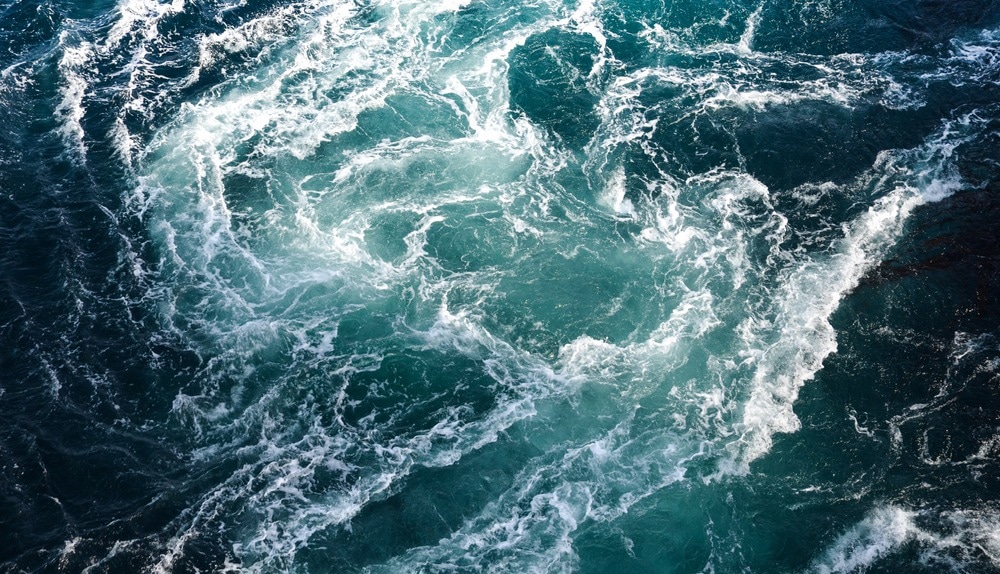Due to its potential use in numerous fields, orbital angular momentum (OAM), which characterizes the "phase twist" of light beams, has attracted attention from academic and industrial researchers. OAM is the modulation dimension for advanced optical underwater communication to access large spectrum resources. Professor Leiming Sun’s research group at the Key Laboratory of Cognitive Radio and Information Processing, Ministry of Education, Guilin University of Electronic Technology, has investigated a novel method for underwater optical communications with OAM demodulation. The results of their research were published in the latest edition of Journal of Marine Science and Engineering.

Study: Identification of Orbital Angular Momentum by Support Vector Machine in Ocean Turbulence. Image Credit: Oksana Kuznetsova Dnepr/Shutterstock.com
Well-established properties of light waves such as wavelength, amplitude, polarization, frequency, and time have been traditionally used in classical wireless optical communication. Novel orbital angular momentum (OAM)-based spatial information modulation has risen in importance as an information resource for wireless communication in the past few decades.
Orbital Angular Momentum (OAM)
A spatially variable amplitude and phase distribution leads to the emergence of the OAM of light. Light beams are "twisted" or "helical" due to OAM.
The phase winds azimuthally around the optical axis. Such beams have a characteristic intensity null at the center caused by destructive interference, which is seen in their intensity distribution. It has been demonstrated that a single photon carrying such a spiral shape bears a well-defined OAM value.
The Laguerre-Gaussian (LG) beam is the most fitting OAM beam as a research target in underwater channels. Each photon's OAM mode value can be any integer, and OAM modes are orthogonal.
Since OAM modes do not interfere with one another during transmission, OAM light is an ideal vehicle used for wireless optical communication.
This enables data transfer and multiplexing transmissions to meet the high demands for information transmission capacity. However, OAM experiences information overload, mostly brought on by the OAM beam's anti-interference capability and transmission interference.
Detecting OAM
The standard method for determining OAM is to count how many bright fringes show up in the intensity pattern when used in combination with grating optics. Influences from underwater turbulence require the detector to be aligned accurately. In practice, this alignment procedure frequently leads to poor OAM identification.
Various techniques have been applied to enhance the OAM signals in underwater optical communications. Integrating neural network technology to recognize OAM has enabled high accuracy, but requires large sets of training samples and presents complex implementation protocols.
A machine learning algorithm can extract the feature vector from trained samples using just a small number of datasets. It is possible to determine the spatial distribution of OAM beams under turbulence in the ocean by looking at their phase space distribution.
Professor Leiming Sun’s team implemented a technique to determine the OAM mode by analyzing the histogram of oriented gradients (HOG). The HOGs are based on the support vector machine (SVM) model.
Support Vector Machines (SVMs)
Support vector machines (SVMs) are a group of supervised learning techniques for classifying data, performing regression analysis, and identifying outliers. SVMs offer many benefits, including efficiency in high-dimensional environments, calculation methods in situations where the number of dimensions exceeds the number of samples, and memory efficiency as it only uses a portion of the training points or support vectors in the decision function.
With the implementation of SVM, the local regional gradient of the image is calculated and counted to create HOG features. The HOG algorithm's primary goal is to determine the image's gradient to retrieve that information as a feature.
Using standard control software, the researchers conducted an experimental simulation of OAM identification under the impact of ocean turbulence. The objective was to replicate the effect of ocean turbulence on beam transmission. The ocean turbulence model was created using the power spectrum inversion approach.
Results
HOG features were extracted by simulating ocean turbulence as described above using SVMs. The classification labels were determined using the topological charge value of the OAM, and the ocean turbulence brought on by varying salinity and temperature was studied. Results of the experiment showed that the OAM's recognition accuracy was 98.93%, 98.89%, 97.33%, 96.66%, 95.40%, and 95.33%, respectively, for the Laguerre-Gaussian beam rates of 1~5, 1~6, 1~7, 1~8, 1~9, and 1~10. The technique developed by the group operated well in the presence of severe turbulence and had a high recognition accuracy.
Outlook
The OAM modal recognition of ocean turbulence based on SVM, as well as the OAM modal recognition simulation under the ocean turbulence channel, were conducted in this research.
Analysis was carried out on how strong turbulence affected OAM's modal recognition. The results of the experiments can be used to generate fresh concepts for optical underwater communication demodulation and research, which has significant experimental and research application value.
Reference
Li, Xiaoji, Jiemei Huang, and Leiming Sun. (2022) Identification of Orbital Angular Momentum by Support Vector Machine in Ocean Turbulence. Journal of Marine Science and Engineering 10, no. 9: 1284. https://www.mdpi.com/2077-1312/10/9/1284/htm
Disclaimer: The views expressed here are those of the author expressed in their private capacity and do not necessarily represent the views of AZoM.com Limited T/A AZoNetwork the owner and operator of this website. This disclaimer forms part of the Terms and conditions of use of this website.